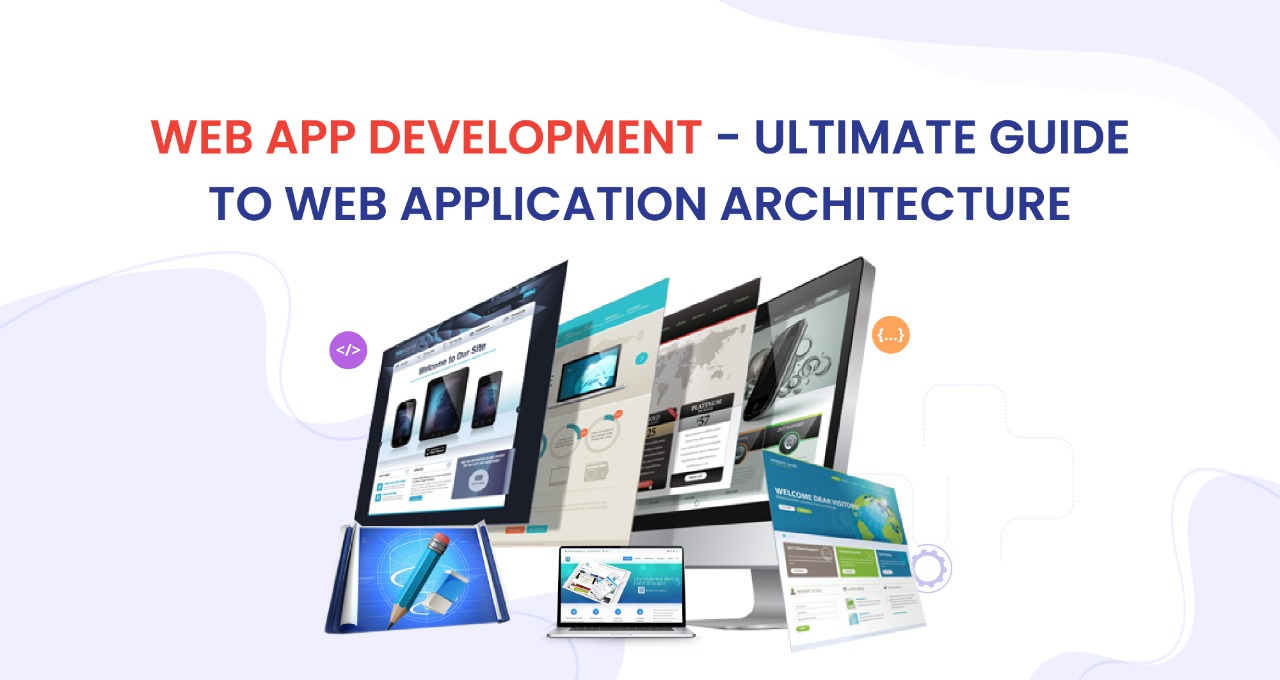
In order for numerous applications to function together, web application architecture specifies the connections between apps, middleware systems, and databases. The search engine will locate the website’s machine and submit that specific page when a user enters a URL and clicks “Go.”
The search engine receives files from the server as a response. Following that, the search engine runs the files in order to display the addressed page to the visitor. The user can now engage with the website. Naturally, a few seconds are needed to complete each of these tasks. Users would not really have trouble with websites conversely.
It is planned to work effectively while fulfilling its unique requirements and objectives. Since the vast majority of internet traffic as well as every app and equipment use web-based communication, web application design is essential. Scale, effectiveness, durability, and privacy are addressed. Here, you learn more about the Web application architecture from the eye of Versatile Mobitech and gain useful insight into its execution, features, and function.
How does Web Application Architecture Work?
Client-side code
It is sometimes referred to as the Front end and is what the user sees. This program’s job is to react to user inputs and produce a visual representation (user interface and user experience). It’s created with CSS, JavaScript, or HTML.
Back-end code
Although the user cannot see the backend code, it controls the business/technical logic. It is in charge of receiving HTTP requests, responding to the client with the results, and saving and retrieving different kinds of data from and into the data store. Programming languages including Java, Ruby, PHP, C#, Python, Node.js, and others can be used to create server-side programming.
Importance of Web Application Architecture
Customers’ expectations change over time, market dynamics change, and a company’s profitable growth never stops. If you don’t have a structural pattern for your web app, your business app will tumble into the huge ball of an architectural anti-pattern.
An effective web app architecture can handle a range of stresses and easily adapt to the shifting requirements of the business, creating a rapid user experience that further boosts app performance. By disassembling the structure into smaller pieces, you may accelerate development by taking on several jobs at once. Additionally, it becomes simple to include new capabilities without changing the main architecture.
Achieve desired business outcomes
The best web application architecture will make sure that your website is operating at its full potential and without any problems, saving your business time and money in the long run. When you work with Versatile Mobitech, then you receive the desired output.
Guarantee client satisfaction
It’s an essential component of developing any online application since it guarantees that your design is effective and scalable, meaning that it will function in a variety of circumstances and prevent downtime. Else it, users would become irritated with business apps and stop interacting with them due to a variety of problems.
The security of the app has been improved
Modern online application architecture views a web program as a system comprising several components, with each component secured separately. As a result, the software’s robust design enhances its overall security by enabling it to repel all common security concerns, including hostile attacks.
Improved app performance
Modern online application architecture considers a web program as a network of several parts, with separate security for each. This sturdy structure enhances the software’s total security, enabling it to fend off all typical security risks, including hostile assaults.
Layers Of Web App Architecture
The architecture of a web-based application mainly consists of four separate levels, each housing the elements of the web app and serving a specific purpose. The following are the four components of web architecture:
Presentation Layer
It makes sure user interaction is seamless while displaying the user interface. The Presentation Layer gives the User Interface elements that analyze and evaluate the information for users, as well as the necessary data to the client-side. Additionally, it includes the process elements that set up all user interactions.
Business Layer
It outlines the principles for efficient data interchange as well as the logic employed for business processes. This layer often referred to as the Application Layer and Domain Logic Layer, is in charge of pulling the user’s browser requests and directing the methods to retrieve the corresponding data.
Persistence Layer
The persistence layer is another level of logic, although it only addresses database access, writing, and modification.
Like the other levels, sometimes people refer to the persistence layer as a data access layer.
Database Layer
It offers incredibly streamlined access to information stored in persistent storage, such as XML and binary files. Additionally, it controls CRUD operations like create, read, delete, and update. The business logic layer and storage or persistence are other names for it.
Types of Web Application Architecture
Single Page Application Architecture
In the architecture of this web application, it presents only pertinent material. It achieves this by first loading the relevant web page and then automatically updating the approximation of its web pages using just the desired information.
In other words, it just asks the server to retrieve the necessary portions of the webpage and does not ask for the server to load any other pages.
Single-page apps offer a more user-friendly interface and increase productivity.
Microservice Architecture
Developers may divide a web program into fewer, conscious chunks using the microservices design they originally invented.With the help of this framework, programmers may work more productively while also simplifying and accelerating project development. This framework may also support writing in a number of different computer languages.
Serverless Architecture
Engineers use serverless architecture to work with third-party telecom operators and cloud infrastructure services to run a web application. This design eliminates one of the most challenging duties in web application construction, infrastructural management. With serverless architecture, you only have to concentrate on a developed prototype.
Progressive Web Application
Many different sectors, notably e-commerce, banking, and leisure, employ progressive web apps. Their main benefits include being lightweight, affordable, cross-device compatible, able to draw web visitors, and offering a fully working app experience.
Conclusion
The current system design inextricably links the success of web applications. It’s challenging to stay on top of changing needs, and even a small error might be the death of your product.
Creating a contemporary web application architecture that is aware of its constraints and issues requires an expert and experienced architect. At Versatile Mobitech, we employ knowledgeable engineers that can help you choose the framework and architecture that will best meet your company’s demands. If you’re stuck while searching for a web architect for your company application, we can assist you. Let’s talk straight away!
Feel free to get in touch with us:
Email: sales@versatilemobitech.com
Visit our website: https://www.versatilemobitech.com/
Like us on Facebook: https://www.facebook.com/versatilemobitech
Subscribe
Subscribe to our blog and never miss our latest updates

Mobile App Development Company Dallas, Texas

Best Mobile App Development Company in UAE

DeepSeek – Everything You Need to Know About This

Why Your Company Website Should Be Responsive

 +91 970 193 0011
+91 970 193 0011 +1 934 221 7261
+1 934 221 7261 +971 55 316 6156
+971 55 316 6156




